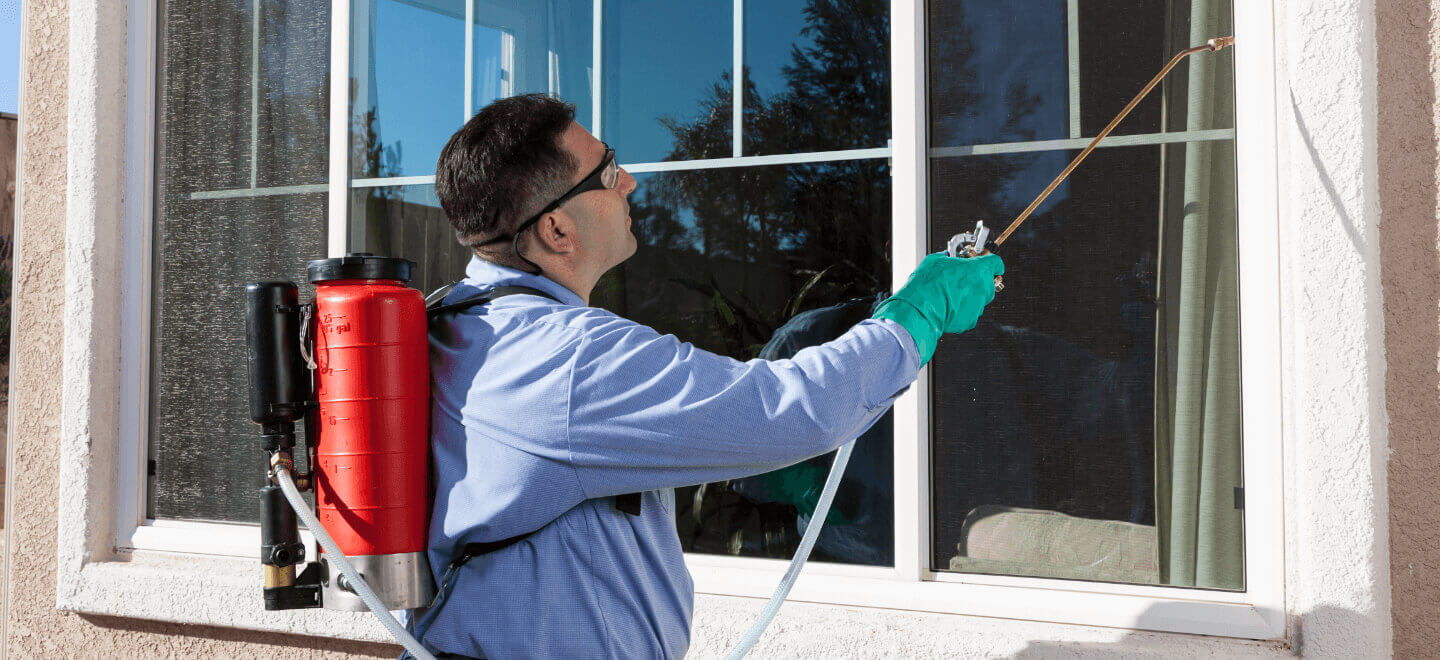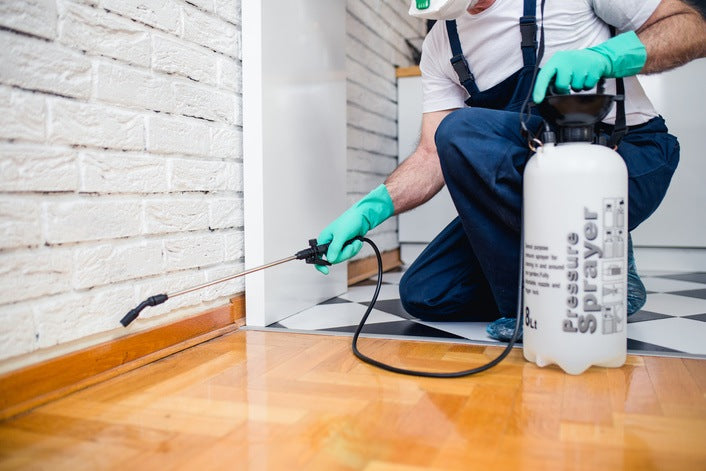Preventative Pest Control Services Chicago: The Most Effective Way to Prevent Undesirable Pests
Preventative Pest Control Services Chicago: The Most Effective Way to Prevent Undesirable Pests
Blog Article
Discovering Different Techniques and Methods for Comprehensive Parasite Control in Residential Spaces
The landscape of bug control in residential rooms has actually advanced significantly, necessitating an extensive understanding of numerous techniques that can be used for efficient monitoring. Standard chemical therapies, while efficient, are progressively being matched by environmentally friendly options and Integrated Insect Administration (IPM) approaches. Homeowners need to consider preventative procedures, such as routine tracking and exact parasite identification, to keep a healthy and balanced atmosphere. However, the real challenge lies in striking a balance in between efficiency and safety-- an expedition that discloses the nuances of each method and its ramifications for lasting living.
Understanding Bug Control Basics
Effective bug control is vital for keeping a healthy and balanced and risk-free living environment. Comprehending the essentials of parasite control entails identifying the kinds of insects that generally get into property rooms, the potential risks they position, and the importance of safety nets. Usual home parasites consist of rodents, insects, and other unwanted creatures that can endanger hygiene, damage property, and cause health and wellness concerns.
A critical initial step in insect control is determining the specific bugs present. This can entail inspecting locations such as attics, cellars, and kitchen areas, where parasites are likely to thrive. When recognized, it is critical to comprehend their routines, breeding cycles, and chosen atmospheres, which can educate appropriate control strategies.
Safety nets are essential to efficient bug monitoring. These consist of sealing access factors, preserving tidiness, and lowering mess to eliminate concealing spots. Furthermore, correct food storage and waste management can significantly decrease the appeal of a home for parasites.

Conventional Chemical Therapies
Among the various insect control approaches, typical chemical therapies have actually long been utilized to resolve problems in property spaces. These therapies generally involve the application of chemical pesticides created to get rid of pests such as pests, rats, and other unwanted microorganisms. The effectiveness of these chemicals can vary, relying on the type of pest, the formulation of the chemical, and the technique of application.
Common classes of traditional chemical treatments include insecticides, fungicides, herbicides, and rodenticides, each tailored to fight certain insects. Insecticides, for instance, may target cockroaches, ants, or termites, while rodenticides are especially formulated to manage rodent populaces. These chemicals are frequently available in different types, consisting of sprays, granules, and lures, permitting homeowners versatility in application.
Despite their efficiency, standard chemical treatments increase concerns pertaining to possible toxicity to people, family pets, and helpful organisms in the environment. It is crucial for property owners to meticulously follow application standards and safety and security precautions to minimize threats. Integrated Insect Management (IPM) approaches can enhance these therapies, making sure an extra all natural method to pest control while taking full advantage of effectiveness and safety in domestic setups.
Eco-Friendly Pest Control Options
Environmentally friendly parasite control alternatives are acquiring appeal as house owners look for much safer and more sustainable choices to conventional chemical treatments. These methods prioritize the health and wellness of both homeowners and the setting, lessening the impact of parasite control methods.
One widely taken on green strategy is using natural repellents originated from crucial oils, such as pepper mint and citronella. These oils not just prevent pests but additionally provide positive scents for indoor areas. Diatomaceous planet, a powder made from fossilized algae, acts as an all-natural pesticide by harming the exoskeletons of insects upon call, leading to dehydration.
An additional efficient strategy entails promoting biodiversity in gardens and lawns. Presenting advantageous insects, such as ladybugs and lacewings, can normally manage pest populaces (Chicago pest control for restaurants). In addition, utilizing traps made from biodegradable materials can help capture and eliminate insects without triggering harm to the environment
Normal upkeep, such as sealing access factors and appropriate cleanliness, further enhances the effectiveness of green insect control. Home owners can take proactive actions to prevent infestations, guaranteeing an extra lasting living atmosphere while successfully taking care of pest-related concerns.
Integrated Pest Management Methods
Implementing integrated pest monitoring (IPM) approaches uses a thorough strategy to pest control that highlights avoidance and long-lasting remedies. IPM incorporates several methods, concentrating on understanding insect actions, life cycles, and ecological characteristics to lessen bug populations effectively. This multifaceted strategy prioritizes non-chemical techniques, such as organic control, habitat control, and cultural techniques, to minimize dependence on chemicals.
A fundamental aspect of IPM is keeping track of and recognizing pests accurately. When treatment is needed, this involves regular examinations and the establishment of activity limits to establish. By understanding the particular bugs impacting domestic atmospheres, targeted interventions can be employed, lowering the likelihood of unnecessary chemical applications.
By cultivating an environment that discourages pest invasions-- such as securing access points and managing wetness-- residents can dramatically mitigate the threat of insect troubles. Via these methods, IPM not just addresses existing bug concerns but likewise cultivates lasting practices that promote long-lasting bug monitoring success.
Preventative Procedures for Homes
To repel potential bug infestations, homeowners must adopt a positive approach that emphasizes preventative steps. This begins with keeping a clean and orderly space, as mess and food particles attract bugs. Chicago pest control for restaurants. Frequently vacuuming, sweeping, and cleaning down surface areas can dramatically reduce the threat of invasions
Additionally, securing entrance factors is critical. Home owners ought to inspect home windows, doors, and foundation fractures for voids that might allow pests accessibility to the home. Making use of caulk and weather condition removing can efficiently obstruct these entrances.
Appropriate web food storage space is another critical procedure. Keeping food in airtight containers and promptly cleaning up spills or crumbs aids hinder rats and pests.
Moreover, taking care of outside settings can avoid insects from intruding on household spaces. Home owners must make certain that water drainage systems are functioning well, and landscaping is maintained clean. Trimming hedges and trees far from the residence and eliminating standing water can even more reduce bug habitats.

Verdict
To More Help conclude, efficient pest control in residential areas requires a multifaceted approach that integrates standard chemical therapies with eco-friendly techniques and Integrated Parasite Management strategies. By focusing on preventative actions, such as preserving cleanliness and sealing access points, home owners can considerably decrease insect events. Normal surveillance and precise insect recognition additionally improve management initiatives. Inevitably, a balanced method that integrates all-natural repellents and the very least harmful chemicals promotes a healthy and balanced and secure living setting while resolving pest-related obstacles.
Understanding the essentials of bug control includes acknowledging the types of pests that commonly invade household rooms, the prospective threats they posture, and the relevance of precautionary procedures.A vital very first step in bug control is determining the particular insects present. Integrated Insect Monitoring (IPM) strategies can enhance these therapies, ensuring an extra holistic strategy to pest control while making the most of efficacy and safety in property Read More Here settings.
Implementing incorporated bug monitoring (IPM) techniques uses an extensive method to pest control that emphasizes avoidance and lasting services.In final thought, effective parasite control in household rooms necessitates a complex method that incorporates standard chemical therapies with eco-friendly techniques and Integrated Pest Management methods.
Report this page